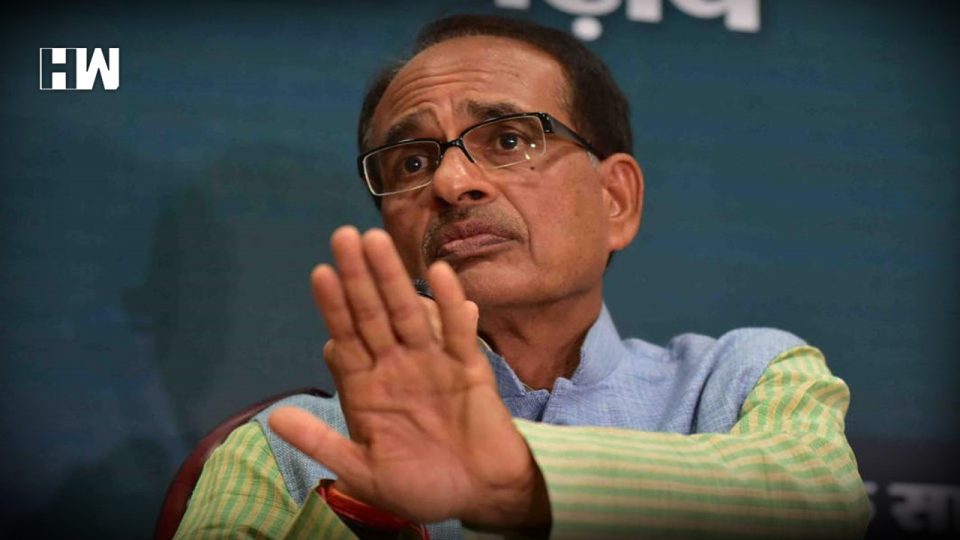BJP won 109 seats with a vote share of 41% in Madhya Pradesh. It received 0.1% more votes than Congress but still lost.
The result of five assembly elections brought cheers to the Congress and tears (figuratively) to the BJP. Congress took an early lead in the number game and by noon the result of the four state- Rajasthan, Chhattisgarh, Mizoram, and Telangana were no longer obscure. But the real nail-biting contest was going on in Madhya Pradesh that gave sleepless nights to both the parties, pollsters and journalists alike. Even 24 hours post the first round of counting, neck to neck fight kept both BJP and Congress clinging on to the hope of victory. Finally, when the numbers on the Election Commission website settled, the Congress had gained an edge over the incumbent BJP with 114 seats while the latter managed to rush ahead on 109 seats.

For BJP, which was fighting the anti-incumbency of more than a decade and a half in the Hindi heartland state, the rout comes as the first big jolt ahead of 2019 Lok Sabha elections. But despite the anti-incumbency, it put up a spectacular fight and made it a difficult playing field for the Congress. Though Congress eventually inched ahead of BJP, a closer look at the vote share tells a different story. The statistics spell out some interesting facts about BJP’s loss.
BJP received more votes than Congress and still lost:
Congress won the 114 seats with a vote share of 40.9%. Whereas, BJP won 109 seats with a vote share of 41%. Which means the BJP received 0.1% more votes than that of Congress. The case of vote shares not equivalently translating into seat shares is not new. A similar scenario also was seen in Karnataka where Congress’ vote share was more than that of BJP but the party was left behind in terms of seat share. Majorly consolidation of popular votes in one constituency is said to be the reason behind it. The broad principle is that parties whose popular votes are more evenly spread across regions tend to have better votes to seat conversion ratio.

“4337”- the number which could have changed BJP’s fortunes:
The analysis of final election results shows that there were at least 10 constituencies where BJP could have easily outplayed Congress in Madhya Pradesh. These are the seats where the victory margin is less than 1000 votes. The lowest victory margin is in Gwalior South where BJP lost by 121 votes. Whereas, on Rajpur (ST) seat the BJP lost by 932 votes. Out of these 10 seats, BJP lost on 7 seats while Congress lost on 3 seats. As this India Today analysis puts it, the sum total of the victory margins in these seven constituencies (4337 votes) would have put these seats in BJP’s kitty. This number- 4337 votes could have changed BJP’s fortunes and paved the way for Shivraj Singh Chauhan to form the government in the state for the record fourth time.

Margins Matter:
The vote shares and overall votes polled in favor of Congress and BJP shows that there was a slender difference between both the parties and it was definitely a close call. Taking this analysis on a micro-level, one can observe that victory margins in many of the assembly constituencies were a decisive factor. On 18 seats in Madhya Pradesh, the victory margin was less than 2,000 votes whereas on 30 seats the victory margin was less than 3,000. There were 45 seats with victory margin less than 5,000. The extremely strained fights on these 20% seats played a pivotal role.

The takeaway from this data is, it is sheer luck that Congress received more votes in these constituencies and the anti-incumbency factor wasn’t at play up to the extent it was expected. Simply put, sheer luck put Congress ahead of the BJP.
Note the NOTA factor:
NOTA, i.e. None of The Above options received 6th largest vote in Madhya Pradesh. According to the Election Commission data, with 5,42,395 votes NOTA measured up to 1.4% of the total vote share. On the seats where BJP lost by less than 1000 votes, NOTA polled more votes. If BJP would have received these votes, it could have won some seats. For example, in Suwasra, BJP lost by a margin of 350 votes. Nota votes polled at Suwarsa were 2,976. In Rajpur (ST) seat BJP lost by only 932 votes while Nota votes were counted to be 3,358.

NOTA trounced BJP NETAs:
While, NOTA votes, if were polled in BJP’s favor in the ten constituencies mentioned above would have changed the scenario, in some constituencies, it actually trounced the BJP. There were four BJP ministers who polled votes less than NOTA. Finance Minister Jayant Malaiya lost by only 799 votes in Damoh, while NOTA received 1,299 votes. MoS health, Sharad Jain who was contesting from Jabalpur North, lost by just 578 votes while NOTA bagged 1,209 votes. In Burhanpur, NOTA scored around 5,700 votes while Archana Chitnis-minister for women and child development lost by 5,120 votes.
As an independent media platform, we do not take advertisements from governments and corporate houses. It is you, our readers, who have supported us on our journey to do honest and unbiased journalism. Please contribute, so that we can continue to do the same in future.

